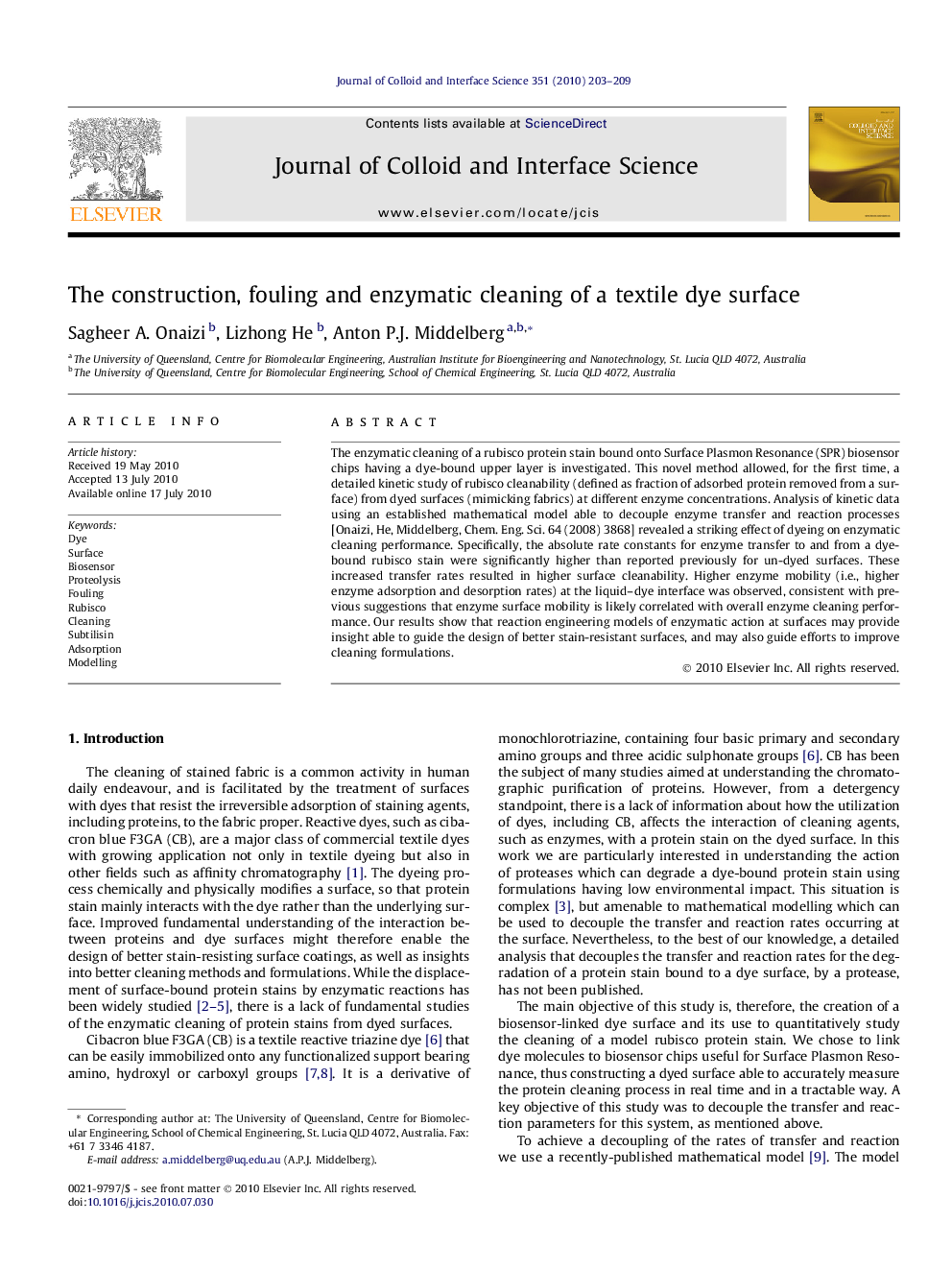| کد مقاله | کد نشریه | سال انتشار | مقاله انگلیسی | نسخه تمام متن |
|---|---|---|---|---|
| 609038 | 880613 | 2010 | 7 صفحه PDF | دانلود رایگان |

The enzymatic cleaning of a rubisco protein stain bound onto Surface Plasmon Resonance (SPR) biosensor chips having a dye-bound upper layer is investigated. This novel method allowed, for the first time, a detailed kinetic study of rubisco cleanability (defined as fraction of adsorbed protein removed from a surface) from dyed surfaces (mimicking fabrics) at different enzyme concentrations. Analysis of kinetic data using an established mathematical model able to decouple enzyme transfer and reaction processes [Onaizi, He, Middelberg, Chem. Eng. Sci. 64 (2008) 3868] revealed a striking effect of dyeing on enzymatic cleaning performance. Specifically, the absolute rate constants for enzyme transfer to and from a dye-bound rubisco stain were significantly higher than reported previously for un-dyed surfaces. These increased transfer rates resulted in higher surface cleanability. Higher enzyme mobility (i.e., higher enzyme adsorption and desorption rates) at the liquid–dye interface was observed, consistent with previous suggestions that enzyme surface mobility is likely correlated with overall enzyme cleaning performance. Our results show that reaction engineering models of enzymatic action at surfaces may provide insight able to guide the design of better stain-resistant surfaces, and may also guide efforts to improve cleaning formulations.
Dyed SPR sensor chip was used as a fabric model to experimentally and theoretically study, in real time and without labelling, the enzymatic cleaning of rubisco from textile-like surfaces.Figure optionsDownload high-quality image (47 K)Download as PowerPoint slideResearch highlights
► A detailed study of rubisco cleaning from dyed surfaces is presented.
► Dyeing affects enzyme mobility but not the intrinsic enzyme reaction rates.
► Higher enzyme mobility at an interface correlates with better enzyme function.
► Mathematical modelling is an important tool in optimising enzyme interface activity.
Journal: Journal of Colloid and Interface Science - Volume 351, Issue 1, 1 November 2010, Pages 203–209